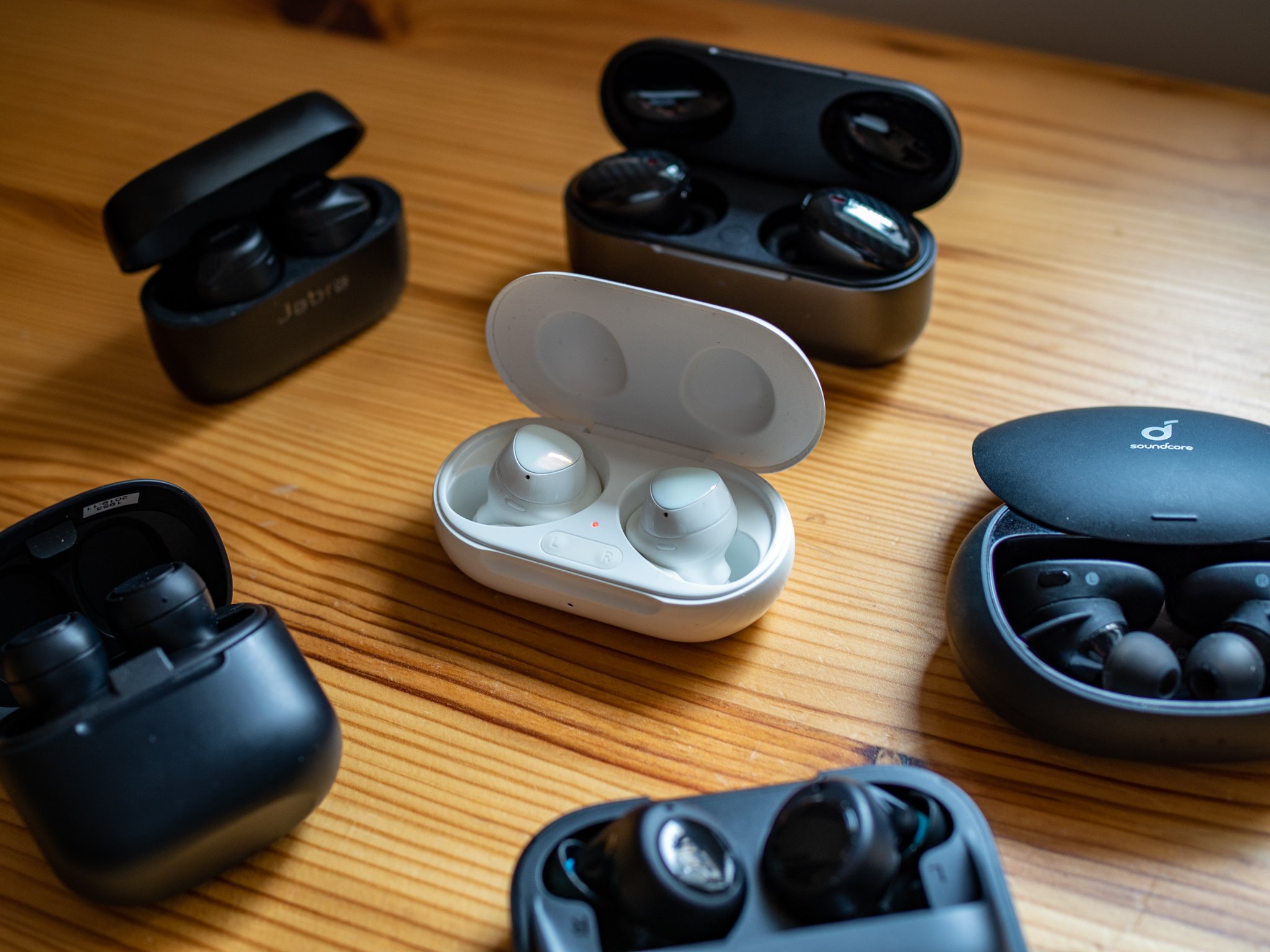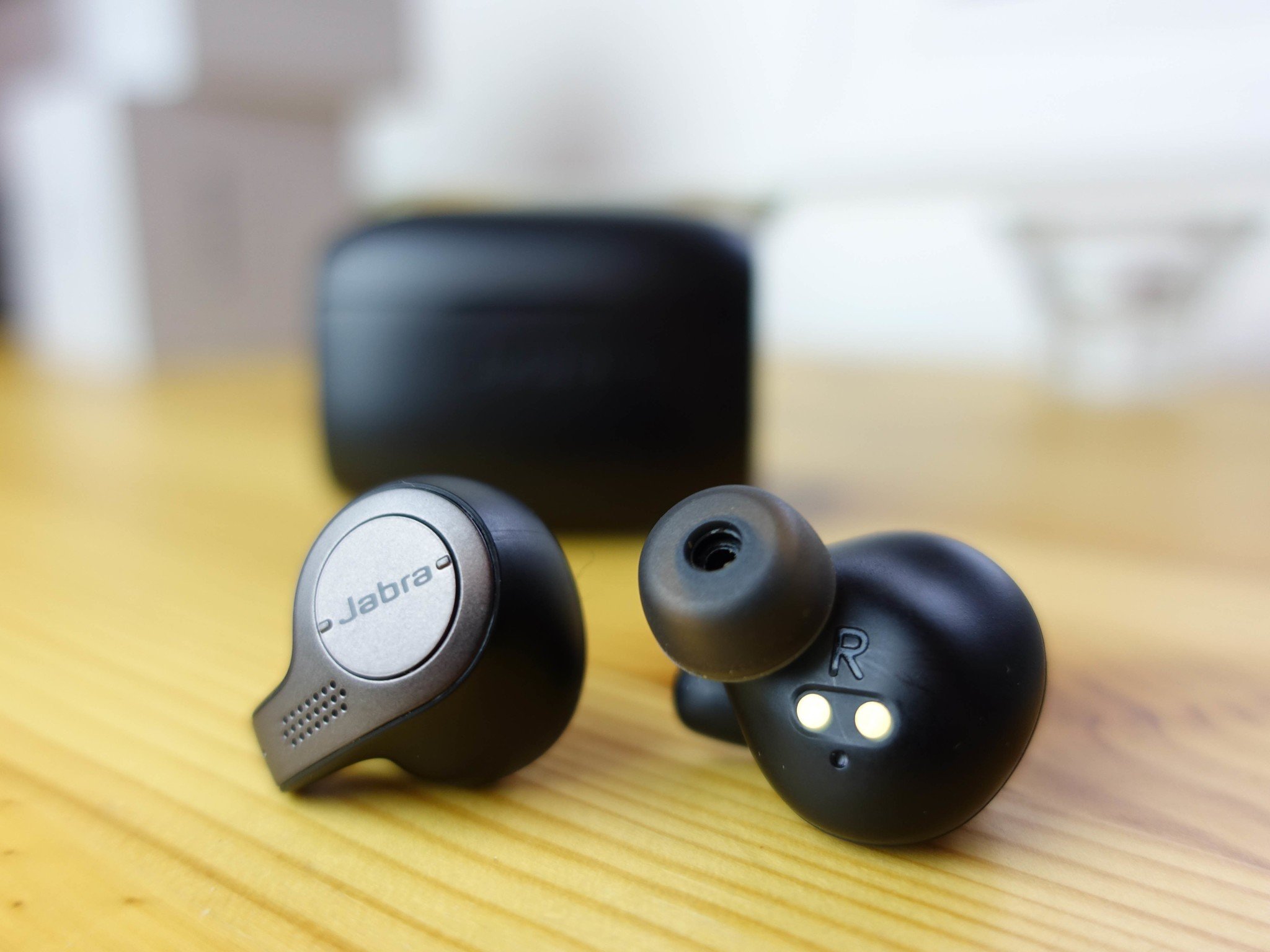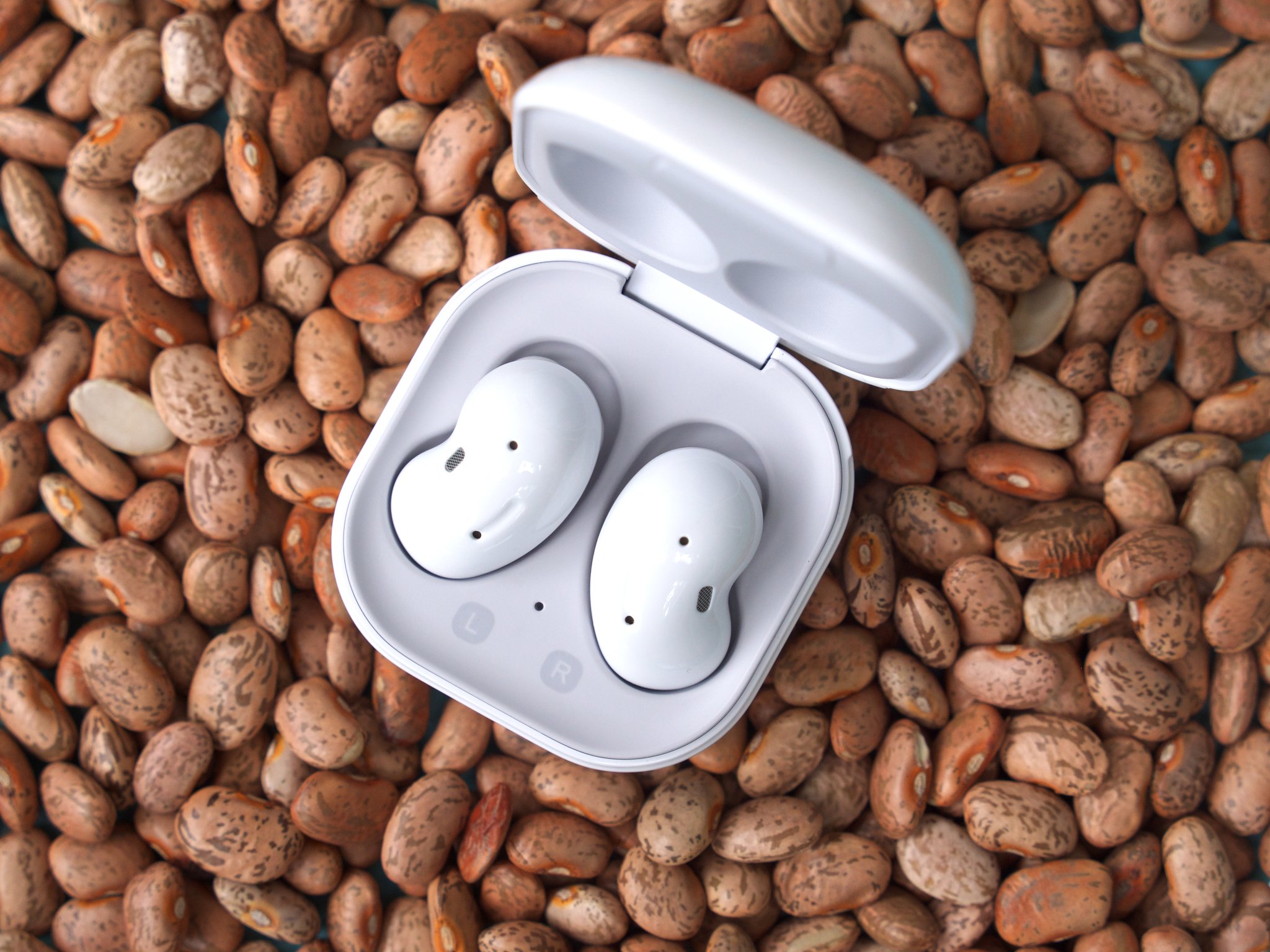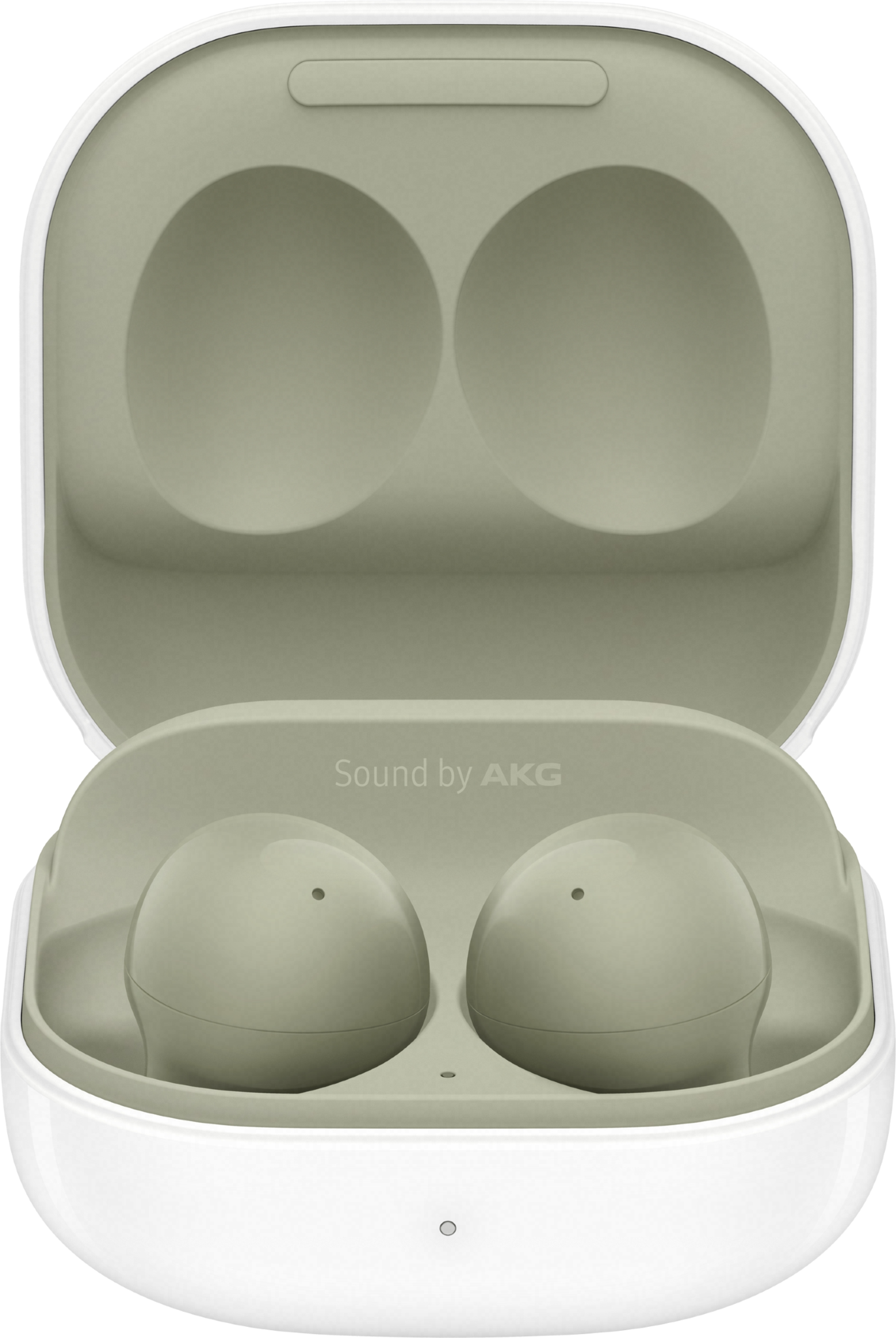From the Bragi Dash to the Galaxy Buds 2, here's how wireless earbuds have evolved over the last six years.
These days, the best wireless earbuds offer the same caliber of sound as their wired counterparts from five years ago while delivering rock-solid connectivity, useful extras like noise isolation, IP rating, digital assistant integration, and more.
But when the first slate of true wireless earbuds debuted six years ago, that wasn't the case. They were plagued by connectivity issues, poor battery life, awkward fit, and generally poor sound quality.
The wireless audio segment in particular has seen a tremendous pace of innovation over the last six years. So let's take a look at some of the key milestones along the way and what's next for this category.
2014-2015: The first wireless earbuds are here
In 2014, a few audio firms were aiming to be the first to launch true wireless earbuds. German startup Bragi started its crowdfunding initiatives on Kickstarter for the Dash back in February 2014, picking up over $3.3 million in just 45 days from nearly 16,000 backers.
Kickstarter backers could get their hands on the Dash for as little as $199, with the earbuds eventually retailing for $299. Bragi made headlines at CES 2015 with the Dash, drumming up significant interest for the wireless earbuds. The Dash promised truly wireless audio alongside a host of additional features, including the AptX audio codec, activity tracking, heart rate and blood oxygen saturation monitoring, and the ability to tune out ambient sound. However, it wasn't the first to market — that honor belongs to Swedish startup Earin.
Earin has the distinction of being the first brand to release truly wireless earbuds.
Earin started a Kickstarter campaign for its wireless earbuds back in June 2014, easily blowing past its funding goal of $300,000 million in just 10 days and eventually crossing $1 million. Early backers of Earin's earbuds could get their hands on it for as low as £79 ($109), with the product retailing for £159 ($220) nearly 18 months later.
Earin ran into inevitable production delays as it sought to get the earbuds out to backers, but by October 2015, its first true wireless earbuds started going out to backers. Meanwhile, backers of the Bragi Dash had to wait until January 2016 to get their hands on the wireless earbuds — nearly two years after its Kickstarter debut.
As you can imagine, first-gen true wireless earbuds were plagued by Bluetooth issues, which was the case on both the Earin and the Dash. While they pushed the needle forward for the audio industry, they weren't great products. Earin's option lacked a mic — so you couldn't take phone calls — and they lasted for under three hours. And as for the Dash, the fitness tracking was inconsistent, and the bone-conduction mic was nearly unusable at launch.
2016: Wireless earbuds go mainstream with the AirPods
As Bragi and Earin were duking it out to get the first true wireless earbuds to market, Japanese audio giant Onkyo showed off its first product in this category back at IFA 2015. The W800BT were introduced in North America in Q1 2016 for $300, and they delivered better sound and lasted marginally longer at three hours. However, they had Bluetooth connectivity issues, and the charging case was gigantic by today's standards.
But by 2016, more brands started paying attention to the true wireless segment, with Samsung introducing its first offering in this category in the form of the $200 Gear IconX. These wireless earbuds were aimed at the fitness segment and had sensors to monitor heart rate, distance traveled, and calories burned, but the two-hour battery life made them a nonstarter. Motorola also dabbled in this category with the $250 Verve Ones+, but like the Gear IconX, they lacked substance.
2016 saw exciting launches from Bragi and Jabra, but Apple AirPods overshadowed them.
While Samsung and Motorola's fledgling attempts didn't gain much momentum, Bragi launched a follow-up to the Dash called The Headphone, offering six-hour battery life and much more reliable connectivity. Bragi got rid of the fitness monitoring features with The Headphone, opting instead to deliver better audio and a longer battery for just $149.
And then, in September 2015, Apple turned the wireless audio segment on its head with the introduction of the AirPods. The AirPods had a similar design aesthetic to the EarPods, but the lack of any wires made them much more enticing. But what truly set them apart was the ease of use; thanks to a dedicated W1 Bluetooth chip, they paired seamlessly with iPhones, iPads, and MacBooks in a matter of seconds, and once paired, they stayed connected.
AirPods were also versatile, with the ability to use just one earbud in mono or both in stereo, and they held up particularly well for calls thanks to beam-forming mics. They also had auto play/pause that worked reliably well, gesture controls, and at $160, they were a decent overall value.
Of course, the AirPods debuted alongside the iPhone 7, the first iPhone without the 3.5mm jack. That wasn't by coincidence; Apple intentionally ditched the jack to sell AirPods as a wireless alternative, and a big part of their success came down to this decision. Five years after the launch of the AirPods, Apple continues to be the runaway leader in this segment.
Jabra also made its foray into this category in 2016 with the introduction of the Elite Sport, which debuted in October for $250. They offered a secure fit with dual mics for calling, worked in mono or stereo mode, featured IP67 water resistance and a suite of fitness tracking options, and three-hour battery life. While the Elite Sport had plenty to offer, the high asking price prevented them from being a mainstream hit.
2017 - 2018: Everyone starts making wireless earbuds
The AirPods acted as an inflection point for the wireless audio industry, paving the way for dozens of alternatives. Jitesh Ubrani, IDC's Research Manager for Worldwide Mobile Device Trackers, says that the introduction of the AirPods acted as a "springboard" for customers and brands. "The products at the time were expensive and lacked great connectivity (especially between the individual earbuds) but AirPods changed that as Apple surprisingly launched a product that was more affordable and had very reliable performance."
After initially ridiculing the lack of a 3.5mm jack on iPhones, Android device makers started getting rid of the jack on their own devices shortly thereafter. Xiaomi did so with the Mi 6 in April 2017, OnePlus followed suit with the OnePlus 6T in October 2017 and Google also ditched the jack with the Pixel 2 series in 2017. Samsung, for its part, continued to offer the 3.5mm jack until the Galaxy S20 series in 2020.
As more brands started to roll out wireless earbuds, 2017 was a turning point for the category.
With the once-ubiquitous 3.5mm jack slowly fading away, brands started rolling out wireless earbuds with increased frequency. Ubrani notes that the removal of the 3.5mm jack acted as another growth driver for wireless earbuds. "We have seen the headphone jack disappear from many devices and that has been another major driver for the market in the last few years. Since then, the market has become commoditized as bill of materials (BOM) costs have dropped substantially and almost every major tech brand launched their own version, since these products have high margins and high demand."
2017 and 2018 saw a lot of interesting launches in this category. Samsung followed up its underwhelming Gear IconX with an updated model that lasted significantly longer. The $200 IconX (2018) didn't have any connectivity issues either, and while it was still aimed at fitness enthusiasts, it doubled as a great option for normal use.
Sony also got in on the action with the $200 WF-1000X, delivering better sound quality than most earbuds at the time. However, the earbuds had fit issues, noticeable video latency, sub-par noise isolation, and average battery life. Another notable launch in 2017 was the Jaybird Run, which launched for $180 and offered decent sound quality, a water-resistant design, comfortable fit, and four-hour battery life.
The true wireless segment went into high gear in 2018, with audio brands delivering refined products with no glaring shortcomings. Jabra's Elite 65t set the standard early on, with the $170 wireless earbuds offering superb sound quality backed by an easily customizable fit, Bluetooth 5.0 connectivity, five-hour battery life, and a pocketable case.
The Elite 65t became one of the best-selling pairs of wireless earbuds, and three years after their launch, you can still pick them up for $80. There were plenty of great options in 2018; Bose made a strong entry in this category with the $250 SoundSport Free, which also offered great sound quality and a comfortable fit but had issues with video latency.
Then Sennheiser made its foray with the $300 Momentum True Wireless Earbuds, setting a new standard for sound quality in this segment. As Bluetooth 5.0 proliferated on budget Android phones and earbuds alike, wireless connectivity issues would soon be a thing of the past.
2019 - 2020: The rise of budget wireless earbuds
With brands sorting out the basics — connectivity and sound quality — they started differentiating their products with unique features. With sound quality still being the biggest consideration in this segment, brands started turning to high-fidelity Bluetooth audio codecs like AptX HD and LDAC to give their offerings an edge.
Samsung redoubled its efforts in this category with the launch of the $130 Galaxy Buds, rolling out much-needed upgrades: six-hour battery life, wireless charging, and an easily pocketable case. 2019 was a particularly great year for wireless earbuds, with the high-end segment fielding excellent options like the Sony WF-1000XM3, Jabra Elite 75t, and the Beats Powerbeats Pro.
The WF-1000XM3 stood out for the exceptional noise cancellation combined with the sound quality, the Elite 75t were a great all-around choice, and the Powerbeats Pro somehow managed to last nine hours from a full charge.
With Samsung, Sony, Jabra, and Apple launching high-end wireless earbuds, 2019 was a particularly fruitful year.
And of course, Apple introduced the AirPods Pro in 2019, with the earbuds offering standout ANC along with improved fit, sound quality, and spatial sound. Like the standard AirPods, the AirPods Pro ended up being an immediate hit despite their $250 retail price.
With most high-end earbuds delivering ANC, a transparency mode to allow ambient noises, digital assistants, customizable sound, wireless charging, and some form of dust and water resistance, true wireless earbuds went from a tech showcase to a mainstream product in just three years.
The maturity of the platform was clearly evident from the sales figures. While wireless earbuds accounted for just under 50 million sales in 2018, that number shot up to over 120 million in 2019. And although the best earbuds still retailed for well over $200, there were plenty of decent alternatives in the $100 and sub-$100 category for the first time.
In fact, 2019 is when most Chinese phone manufacturers started getting into true wireless earbuds, leading to a wave of budget-focused models that lowered the barrier to entry for this category. Xiaomi led the way with a slate of budget wireless earbuds that debuted for under $50, and OPPO soon followed with its Enco series, undercutting the likes of Samsung and Sony.
Then there's Anker. The U.S.-based brand leveraged its Soundcore label to roll out affordable wireless earbuds with great sound quality and exciting features. The Soundcore Liberty Air offered an AirPods-esque design and sound quality for just $80, and they weren't the only ones; budget options from 1More, JLab, TaoTronics, Aukey, Mpow, and others showed that budget wireless earbuds could be just as good as their expensive counterparts.
2020 continued in much the same way; we got plenty of interesting products in the form of the Galaxy Buds+, Galaxy Buds Live, Jabra's Elite 85t, Bose QuietComfort Earbuds, Sennheiser's Momentum True Wireless 2, and Sony's excellent WF-SP800N workout earbuds. Oh, and OnePlus finally decided to join the party with the OnePlus Buds, and Google followed suit with the Pixel Buds.
2021: The democratization of wireless audio
Wireless earbuds have matured in a relatively short amount of time, and in 2021, this increasingly crowded category includes hundreds of great options that start as low as $15 and go all the way to $900. There hasn't been any shortage of great product launches; Samsung kicked things off early with the Galaxy Buds Pro — its best-sounding earbuds yet — and these were followed by the Sony WF-1000XM4, Soundcore Liberty Air 2 Pro, the affordable Pixel Buds A-series, Nothing ear (1), the long-awaited OnePlus Buds Pro, the Galaxy Buds 2, and the second-gen Amazon Echo Buds.
As this category matures, brands are locking features to their own ecosystem.
In testing the ear (1) and other wireless earbuds in its category, what was immediately clear is that you don't have to pay over $100 to get great-sounding wireless earbuds with useful extras.
In fact, the wireless audio industry has matured to a point where ANC, auto-pause/play, wireless charging, and water resistance are becoming table-stakes features. With the $100 ear (1) offering all of the above and a unique design, it's clear that brands are now aiming to differentiate their products to stand out. One of the ways they're doing so is by ecosystem lock-in; the Galaxy Buds Pro have 360-degree audio and fast switching, but these features are limited to Samsung's recent Galaxy phones and tablets.
If you're using an iPhone, you miss out on most of the extras that the Buds Pro have to offer. In a similar vein, while the AirPods Pro are technically compatible with Android phones, they don't automatically connect every time you take them out of the case, auto play/pause is missing, and you don't get a battery indicator in the Bluetooth status bar.
It makes sense for brands to do this; restricting features to their own devices allows them to retain users within their ecosystem. And with wireless earbuds becoming a key part of the tech upgrade cycle, it's unlikely this particular trait will change soon.
What's next for wireless earbuds?
The pandemic catalyzed the wireless earbuds category; as everyone stayed home and interacted with the outside world primarily over video meetings, wireless earbuds provided an easy way to stay connected. As a result, the wireless audio segment racked up over 300 million sales in 2020, and that number is set to increase significantly in the next two years.
"We're expecting double digit growth in terms of global shipments. 31% YoY in 2021, 21% in 2022, 13% in 2023. A lot of this growth will come from emerging markets as prices go down and more phones ditch the headphone jack. Moreover, brands are starting to bundle their products, making TWS more accessible," says Ubrani.
As for what to look forward to from the next wave of wireless earbuds, Ubrani says lossless audio could be a driver. "From a device perspective, I think we'll see more focus on comfort and fit, more brands, and features like lossless audio and spatial audio will start to gain some salience."
Bluetooth codecs can transmit audio at high bitrates. With major streaming services getting onboard the lossless bandwagon, it is entirely likely that audio brands will leverage hi-res audio as the next big differentiator for their earbuds. I can't wait.
The default choice
Samsung Galaxy Buds 2
$150 at Amazon $150 at Samsung $150 at Best Buy
The 'buds that have it all
The Galaxy Buds 2 give you everything you're looking for in wireless earbuds: they sound great, last five hours on a full charge, feel lightweight for all-day use, switch easily between your devices, and tune out ambient noises effortlessly.
Source: androidcentral










